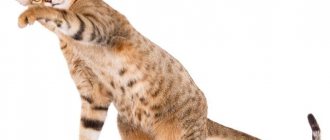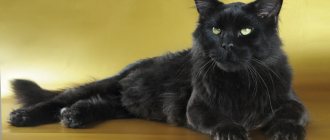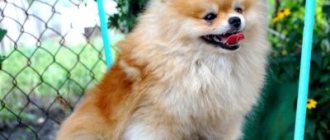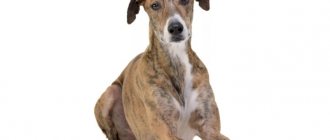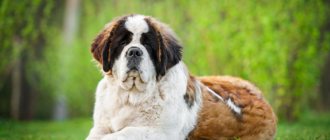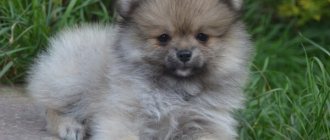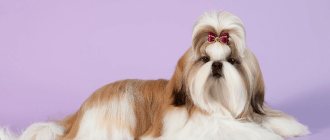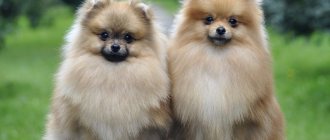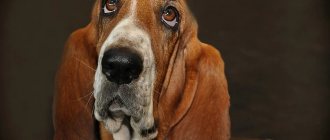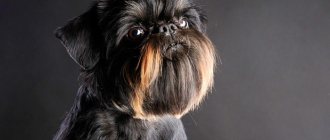Perhaps one of the most amazing pets is the white Maine Coon - a cat with amazingly beautiful eyes. Those who have already become more familiar with this natural creature are completely delighted with the animal. In this article we will learn the secrets of cat color and its variations. How to choose and care for a kitten.
Cats of this breed most often have blue eyes, although other colors are also found. The body is powerful, the long legs have a massive appearance, helping to avoid falling into snowdrifts in winter. In cold weather, the animal’s warm undercoat saves it. The Maine Coon's fluffy tail is a real work of art. It may well replace a blanket for a cat.
In adulthood, the animal can reach 10 kg of weight. The length of the largest cat of this breed is 132 cm. Representatives of this breed usually have tufted necks, short and massive necks, and adorned with a furry collar. The fur itself is water-repellent, so cats are not afraid to swim.
Features and variations of white color
The fact that Maine Coon kittens are mostly born white can be called a bizarre game of nature; marriage is rare. Even in the uterine period (phase - embryo), the formation of coat color occurs. Responsibility for this lies with pigment cells, evenly distributed in the area of the back, withers, crown and tail.
In nature there are bizarre combination colors; white spots can be seen in different places of the body. Note that the color of a cat can be different, so there are different variations:
- Van - the presence of several darkish spots on the white coat;
- Harlequin - in this version the predominant color is white interspersed with other colors on the back;
- Bicolor – the presence of white and a second auxiliary color;
- White spotting is 1-2 cm in size, popularly called “white buttons”;
- White markings – colloquially they are called “tuxedo” or “medallion”.
Physiological characteristics of Maine coon cats
These are the largest domestic cats. For an adult male, a weight of more than 8 kg can be considered normal, but in some cases an adult cat weighs 14 kg or more. The weight of a female rarely exceeds 6 kg, although there are exceptions.
A special feature of this breed is its long growth period - the animal will need from 3 to 5 years to reach its final size. The average height of Maine Coons is 30–40 cm, body length is up to 1.2 m, of which almost 40 cm is the tail.
Average statistical data on the weight of animals, depending on age:
| Kitten age | Cat weight | Cat weight |
| Newborn kitten | 100–140 g. | 120–160 g. |
| 1 Week | 160–230 g. | 190–250 g. |
| 2 weeks | 160–230 g. | 190–250 g. |
| 3 weeks | 420–550 g. | 440–600 g. |
| 1 month/4 weeks | 560–680 | 630–750 g. |
| 2 months/8 weeks | 1.1–1.4 kg. | 1.2–1.5 kg. |
| 3 months/12 weeks | 1.7–2.4 kg. | 2.8–3.6 kg. |
| 4 months/16 weeks | 2.7–3.6 kg. | 3–3.8 kg. |
| 5 months/20 weeks | 2.8–3.9 kg. | 3.2–4.2 kg. |
| 6 months/24 weeks | 3.2–4 kg. | 3.8–4.5 kg. |
| 7 months | 3.6–4.7 kg. | 4.2–5.6 kg. |
| 8 months | 3.8–4.9 kg. | 4.5–6.1 kg. |
| 9 months | 4.1–5.8 kg. | 4.6–6.8 kg. |
| 10 months | 4.3–6.5 kg. | 4.8–7.2 kg. |
| 11 months | 4.3–7 kg. | 5–7.5 kg. |
| 1 year/12 months | 4.5–8.3 kg. | 5.4–8.8 kg. |
| 5 years | 5–8.5 kg. | 5.8–12 kg. |
Maine Coon kitten, male, 3 months
Main phenotypes of Maine Coons (photo gallery)
These phenotypes may vary in the following qualities:
- by the color of the main tone (black, blue, red, cream, black and blue-cream tortoiseshell, silver or smoke, white);
- according to the type of white spotting (van, harlequin, two-color, with white);
- by type of tabby pattern (marbled or classic tabby, tiger tabby or mackerel, spotted, agouti factor, shaded, chinchilla).
White Maine Coon eye color
Animals of this breed can have eyes of different colors, not just the standard type. There is an albino - a white Maine Coon with blue eyes, a white Maine Coon with different eyes: green, yellow, with a pinkish tint.
Breeders believe that cats with blue eyes are deaf, although this sign is not always true. Scientists have not yet been able to fully study this phenomenon.
Differences between adults and ordinary people
Among other representatives of the cat family, the Maine Coon stands out, first of all, for its size. These are large cats, they have powerful paws, a strong musculoskeletal system, and even a larger muzzle than other members of the cat family. Secondly, his habits give him away - self-esteem, pride. Taken together, these features resemble wild royals
What to pay attention to when in doubt:
- The purebred pet has a “box” muzzle and slanted eyes. Simple cats have round eyes, their muzzle is either triangular or round, and there is no characteristic shape.
- Another feature is that the ears are pointed and topped with original tassels. Domestic cats cannot boast of such an appearance.
- Maine Coons reach a weight of 8 to 10 kilograms. An ordinary adult cat will weigh no more than 5 - 6 kilograms. An adult cat of noble blood, even at first glance, will seem large, heavy, and impressive.
- You can distinguish a domestic cat by the degree of vegetation. The fur on the face and paws of pedigree cats will be thick and short, becoming longer towards the back and sides, forming a fluffy collar and a kind of mane, and there are pronounced “pants” on the hind legs. In simple cats, the hair is usually uniform - either short or elongated - with undercoat.
- Another sign of pride for feline aristocrats is a luxurious tail. It is unusually (unlike all other breeds) fluffy, spreading, reaching a length of 45 to 60 cm. In simple animals, tails usually do not grow longer than thirty centimeters.
Maine Coons are distinguished by their character and habits. These are independent, humane animals. They resemble dogs in character. They love to play with water, splashing it out of a bowl or with a stream from the tap, and bathe with pleasure. They have a high level of intelligence and are easy to train. The owners of these cats constantly hear their voice - they purr, meow, purr, rumble, and accompany their actions with sounds. Moreover, their high tone does not at all correspond to their respectable appearance. Maine Coons have a melodic and even squeaky voice.
Health problems
The Maine Coon, which is not ill, behaves like a cheerful and active pet. These cats have an excellent appetite and excellent coat. But despite this, the meowing creature needs to be properly cared for. Be extremely careful if any unhealthy symptoms appear.
Like other types of cat breed, Maine Coons need to be vaccinated against common diseases: rhinochoracheitis, panleukopenia, calcivirosis, helminths, etc. If necessary, seek qualified help.
Deafness
In most cases, this disease affects blue-eyed white pets. There is no need to worry too much, because a white Maine Coon can perfectly navigate the room where he lives. The ability to sense vibration helps them in this. Due to hearing loss, cats of this breed have keen eyesight and a good sense of smell.
Tendency to allergies
New foods are given to the animal with extreme caution, since Maine Coons are often susceptible to allergic reactions. It may occur due to the following products:
- Fish and seafood;
- eggs;
- chicken;
- vegetables with bright colors: carrots, tomatoes, beets.
If the snow-white coat turns yellow, and the animal’s eyes are watery, you should immediately remove the new product from the diet and contact a veterinarian.
Behavior and character
The Maine Coon is curious, playful, affectionate and gentle. Pets do not show aggressiveness unless they are in danger and are endowed with a friendly disposition. Kittens are active and lively, love to play, especially with small children. He is easy to train and educate, and easily masters new toys. Maine Coons prefer to climb onto high surfaces, despite their size. For this reason, the pet owner needs to purchase or make a tall house for the animal.
Adults become lazy, they like to climb higher and watch what is happening. The Maine Coon cat is endowed with self-esteem, he is graceful and well-mannered. Because of these qualities, he will not touch another pet’s bowl or take food from the owners’ table. The main feature of the breed is the ability to “talk.” Maine Coons do not meow, they make sounds with an intonation that resembles a human conversation.
Caring for a white-haired Maine Coon
Caring for a pet primarily involves its general health and the appearance of its coat.
Wool
At the exhibition, Maine Coons with luxurious fur, fluffy collars, and attractive “pants” on powerful paws always attract enthusiastic attention. Nature has endowed these beauties with fur protection, which in the wild saves animals from the harsh weather conditions of northeastern America.
To prevent your pet’s chic fur coat from becoming dirty black and forming “beaters”, it needs to be carefully looked after. For example:
- during shedding, comb out excess hair with special combs that facilitate this process;
- bathe your pet so that its fur shines with purity and beauty;
- treat with medications to avoid the development of dermatitis.
Feeding
It is preferable to feed the Maine Coon with special food (premium class), which contains the necessary micro-macroelements and vitamin supplements. Such food usually does not contain harmful salt, sucrose and additional spices. It is useful to add sprouted cereals - oats, wheat - to dishes twice a week.
Walking and playing
Large felines are very active. Despite its size. Therefore, the Maine Coon benefits from active exercise. Being in a small space, they move little and gain excess weight. Cats can even develop depression.
If possible, it is better to walk your pet in a suburban area or nature. Here you can run and play with your cat. They will be happy to play with a blue or other colored ball. If the animal does not want to leave the apartment, you should not force it outside.
Comparison of mestizos and purebred kittens
American Maine Coon, European Maine Coon
To compare the characteristics of purebred representatives and half-bloods, it is worth considering the following table.
| Thoroughbred | Metis | |
| Weight at 6 months | 3-6 kg. | Depending on the mixture. On average from 2-4 kg. |
| Adult weight | Up to 10 kg | Up to 7 kg. |
| Dimensions | Large | Medium sized animal |
| External features | Characteristic tassels on the ears | In most cases, there are no tassels. Many half-breeds most closely resemble ordinary yard cats |
| Character | Headstrong | Attached to their owners |
| Nutrition | Matches. Enjoy eating food, meat, fish and other foods | Matches. Enjoy eating food, meat, fish and other foods |
Price
The cost of the animal may depend on the place of sale, and you can buy a cat in a nursery or from a private owner. And, although the cost in the latter case may definitely be lower, it is not at all necessary that the animal will be purebred. In other words, with a private purchase there are significantly more risks. Another thing is nurseries.
Their addresses can be found on Internet resources, they are located in many cities and, in addition, there is the possibility of transportation. By dealing with nurseries, the breeder immediately receives several advantages.
First of all, he is confident that this is a real representative of the breed. Next, the purchase of an animal is accompanied by all the necessary documents and care tips.
They can also warn you about possible animal diseases and how they should be treated. Ideally, of course, if you feel something is wrong, you should immediately go to the veterinarian.
On the other hand, you can do something yourself, for example, cut off the damaged hair - in case of lichen, be sure to burn it, and treat the damaged areas of the skin with a specialized product. Unfortunately, this is true, and cats can get sick too, but it’s more difficult to tell them about it.
On average, the cost of a kitten can vary from $600 to $1,500.
Albinism (c)
Albinism is the complete or partial absence of pigment in the skin, fur and retina of the eye, caused by a violation of melanin synthesis. In the wild, this mutation, in the vast majority of cases, turns out to be non-viable. However, due to the elegance and unusualness of this color, it is quite popular in breeding, and sometimes is breed-forming.
Albinism is regulated by a whole group of recessive genes, the most recessive of which are c and ca. In a homozygous state, the genes designated c and ca can lead to complete discoloration of all areas of the fur and retina of the eye, since melanocytes are still present in the hair follicles, you need to understand that under certain conditions (for example, when the ambient temperature drops) their effect can be manifested .
What determines the red color of a kitten?
The scientific name for cats with a red color is red, otherwise - with the orange gene (O). Females and males are carriers of 2 sex chromosomes. For the former they are designated as XX, for the latter – XY. The gene responsible for the red coat color is located on chromosome X.
Because cats only have one X chromosome, they can be completely black or red. Male tortoiseshells are very rare among representatives of this family. If they are born with this color, they usually turn out to be sterile.
At conception, the fetus receives one chromosome each from its mother and father. He takes X from his mother, X or Y from his father. As a result of the combination of maternal X and paternal X, a girl is born. If X mother and Y father meet, a boy is born. The baby always receives color from the mother, and from the father only if he passes on the X chromosome to the baby.
Based on the above, we can conclude that:
- the birth of a red kitten is possible from parents of the same shade;
- if mom’s fur is red and dad’s is black, a ginger kitten or tortoiseshell cat will be born;
- A black female and a red male give birth to tortoiseshell girls and black boys.
Tortoiseshell cat
Tortoiseshell cats can produce offspring of different colors. When mating with black cats, they give birth to black or tortoiseshell girls and red or black boys, with red cats - red or tortoiseshell babies and black babies. Knowing this, it is possible to predict with high accuracy what color wool the heirs of specific parents will have.
The best education and training of Tibetan Mastiff dogs
